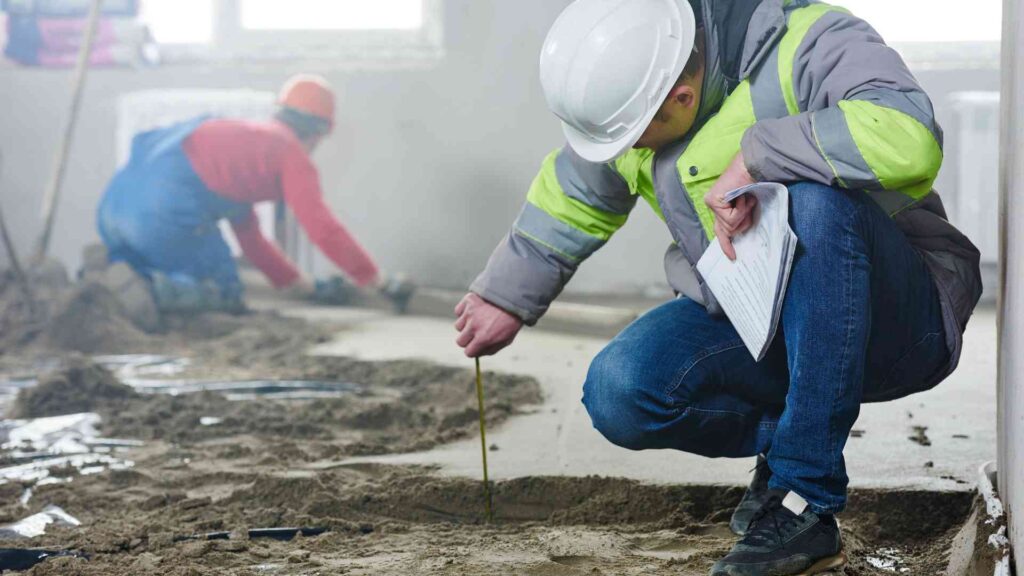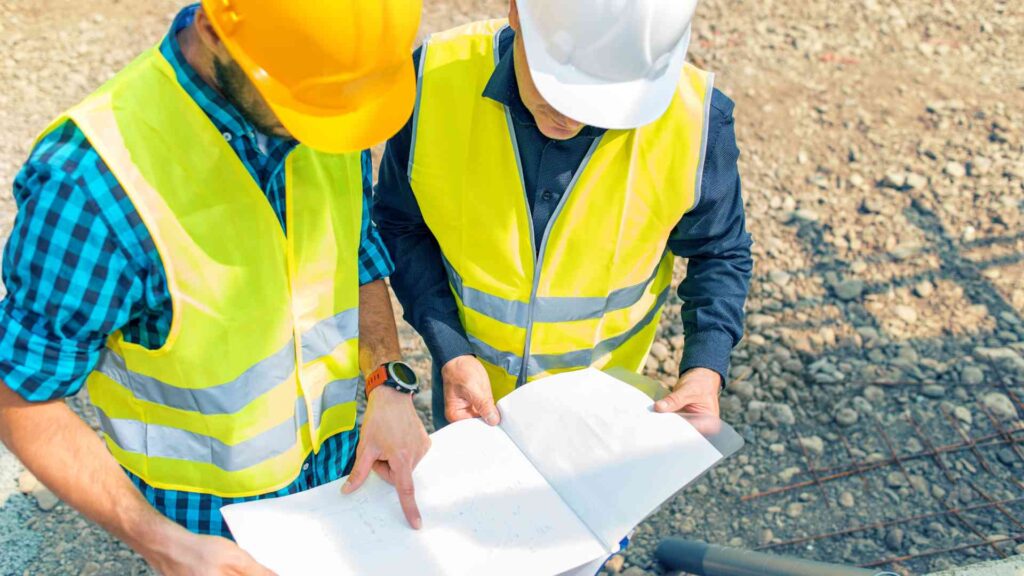Concrete is one of the most widely used materials in construction, but its production can have a significant impact on the environment. In recent years, there has been a growing emphasis on sustainable concrete practices, and Buckeye is at the forefront of this movement. Our commitment to sustainability is not only benefiting the local area, but it is also setting an example for other communities.
Understanding Sustainable Concrete Practices
The Importance of Sustainability in Construction
Sustainability is crucial in the construction industry as it aims to reduce the environmental impact of building materials and processes. Concrete production is known to contribute to carbon emissions and waste generation, making it a focus for sustainable practices. By adopting sustainable concrete practices, we can mitigate these negative effects and create a more environmentally-friendly construction industry.
Key Components of Sustainable Concrete
To achieve sustainable concrete practices, several key components need to be considered. First and foremost, the use of recycled materials is essential. Incorporating recycled aggregates and supplementary cementitious materials reduces the need for virgin resources and limits the amount of waste sent to landfills.
Recycled aggregates, such as crushed concrete, can be used as a replacement for natural aggregates in concrete production. This not only reduces the demand for virgin materials but also helps in diverting construction and demolition waste from landfills. By giving new life to these materials, we can significantly reduce the environmental impact of concrete production.
In addition to recycled aggregates, the use of supplementary cementitious materials (SCMs) is another important aspect of sustainable concrete practices. SCMs, such as fly ash, slag, and silica fume, can replace a portion of the cement in concrete mixtures. This not only reduces the carbon footprint of concrete production but also helps in utilizing industrial by-products that would otherwise be disposed of as waste.
Furthermore, the efficient use of water and energy in the production of concrete is crucial for sustainability. Water is a valuable resource, and its scarcity in many regions of the world makes it essential to optimize its use. By implementing technologies like high-performance mix designs and advanced curing methods, we can reduce the amount of water required in the concrete production process.
Similarly, energy consumption in concrete production can be minimized through the use of energy-efficient equipment and processes. The incorporation of renewable energy sources, such as solar and wind power, can further reduce the carbon footprint associated with concrete production.
By optimizing these resources and using innovative technologies, we can minimize our environmental footprint and conserve valuable resources. Sustainable concrete practices not only benefit the environment but also contribute to the long-term viability of the construction industry.
The Role of Buckeye in Sustainable Construction
Buckeye’s Commitment to Sustainability
Buckeye is dedicated to promoting sustainability throughout the construction industry, particularly in concrete production. We recognize that our actions have a lasting impact on the environment and are committed to minimizing that impact through sustainable practices.
We have implemented stringent guidelines for concrete production, ensuring that our processes meet the highest standards of environmental responsibility. By adhering to these guidelines, we are able to produce concrete that is not only durable and reliable but also sustainable.
Local Initiatives in Sustainable Concrete Practices
Our commitment to sustainability extends beyond our own operations. Buckeye actively collaborates with local organizations and communities to promote sustainable concrete practices. By sharing our knowledge and expertise, we support the development of sustainable construction practices in the Buckeye area.
One example of our local initiatives is our partnership with the Buckeye Environmental Council. Together, we have launched a program called “Concrete for a Greener Future,” which aims to educate the community about the benefits of sustainable concrete and provide resources for implementing these practices.
Through this program, we organize workshops and seminars where experts in sustainable construction share their insights and experiences. We also offer hands-on training sessions for contractors and builders, teaching them how to incorporate sustainable concrete practices into their projects.
In addition to our partnership with the Buckeye Environmental Council, we have also established a scholarship program for students pursuing degrees in sustainable construction. This program not only supports the education of future professionals in the field but also encourages innovation and research in sustainable concrete practices.
Furthermore, we actively engage with contractors and builders to educate them about the benefits of sustainable concrete practices and assist them in implementing these practices in their projects. By working together, we can create a more sustainable construction industry in Buckeye and beyond.
Our commitment to sustainability is not limited to concrete production alone. We also prioritize the use of eco-friendly materials in our operations, such as recycled aggregates and low-carbon cement. By incorporating these materials into our construction projects, we reduce the environmental impact and contribute to a greener future.
In conclusion, Buckeye is deeply committed to promoting sustainability in the construction industry. Through our stringent guidelines, local initiatives, and collaborations with organizations and communities, we strive to create a more sustainable future for Buckeye and beyond. By embracing sustainable concrete practices and using eco-friendly materials, we can build a greener world for generations to come.
The Impact of Sustainable Concrete Practices in Buckeye
Environmental Benefits in the Local Area
The adoption of sustainable concrete practices in Buckeye has had significant environmental benefits. By reducing carbon emissions and minimizing waste generation, we are positively impacting the air and water quality of the local area. This not only benefits the environment but also improves the overall quality of life for residents.
One of the key environmental benefits of sustainable concrete practices is the reduction in carbon emissions. Traditional concrete production releases a significant amount of carbon dioxide into the atmosphere, contributing to climate change. However, by implementing sustainable practices such as using alternative cementitious materials and optimizing mix designs, Buckeye has been able to significantly reduce its carbon footprint. This reduction in carbon emissions not only helps combat climate change but also improves the air quality in the local area, leading to a healthier and more sustainable environment for residents.
In addition to reducing carbon emissions, sustainable concrete practices in Buckeye also focus on minimizing waste generation. Traditional concrete production generates a large amount of waste, including excess concrete, packaging materials, and water runoff. However, by implementing practices such as recycling and reusing concrete waste, as well as implementing water management strategies, Buckeye has been able to significantly reduce the amount of waste generated during construction projects. This not only reduces the strain on local landfills but also helps protect the water quality in the area, ensuring that our natural resources are preserved for future generations.
Economic Implications of Sustainable Practices
While sustainable concrete practices may require initial investments, they deliver long-term economic benefits. By reducing resource consumption and waste generation, Buckeye is able to lower operational costs, resulting in increased profitability for builders and contractors.
One of the key economic benefits of sustainable concrete practices is the reduction in resource consumption. Traditional concrete production requires large amounts of raw materials, including aggregates, cement, and water. However, by implementing sustainable practices such as using recycled aggregates and optimizing mix designs, Buckeye has been able to reduce its reliance on virgin materials. This not only helps conserve natural resources but also reduces the cost of raw materials, leading to cost savings for builders and contractors.
In addition to reducing resource consumption, sustainable concrete practices also focus on minimizing waste generation. By implementing practices such as recycling and reusing concrete waste, Buckeye is able to reduce the amount of waste that needs to be disposed of, resulting in cost savings for waste management. Furthermore, the demand for sustainable construction practices is on the rise, with more and more clients and investors prioritizing sustainability in their projects. Buckeye’s commitment to sustainable concrete practices positions us as a leader in the industry, attracting clients and investors who value environmentally responsible construction. This increased demand for sustainable projects not only creates new business opportunities but also drives economic growth in the local area.
The Future of Sustainable Concrete in Buckeye
Upcoming Sustainable Projects in Buckeye
Buckeye has several upcoming projects that highlight our commitment to sustainable concrete practices. These projects incorporate innovative techniques and materials to create structures that are not only aesthetically pleasing but also sustainable. By showcasing these projects, we hope to inspire others in the construction industry to embrace sustainable practices.
Long-term Goals for Sustainability in Construction
Looking ahead, Buckeye has set ambitious long-term goals for sustainability in construction. We aim to further reduce our environmental impact by continually improving our processes and finding innovative solutions. By investing in research and development, we strive to identify new materials and practices that enhance sustainability in concrete production.
Furthermore, we will continue to collaborate with local partners and organizations to promote sustainable construction practices. Through shared knowledge and collective efforts, we can shape a more sustainable future for the construction industry in Buckeye and beyond.
In conclusion, sustainable concrete practices are essential for minimizing the environmental impact of construction. Buckeye’s commitment to sustainability has positioned us as leaders in the industry, and we are making a significant difference in the Buckeye area. By understanding the importance of sustainability and incorporating key components of sustainable concrete, we are able to create structures that are not only durable but also environmentally-friendly. The impact of sustainable practices extends beyond the environmental benefits, as we also experience economic advantages and work towards a more sustainable future. Buckeye’s upcoming projects and long-term goals reflect our dedication to sustainability and our desire to inspire others in the construction industry. Together, we can make a lasting difference in Buckeye and create a more sustainable future for generations to come.


